Day 2 of a two day Private Tour up on the North Norfolk coast today. It was a different day to yesterday, cloudy all day with a fresh N wind off the Continent, which brought with it the promise of arriving migrants.
This time we made our way east along the coast. We made a quick stop at Stiffkey first. As we got out of the car, several House Martins and Swallows were hawking for insects over the trees, presumably fuelling up before heading off. We wanted to have a walk through the coastal bushes to see if anything had arrived overnight. A couple of other people had the same idea, so we agreed to keep in touch and let each other know if there was anything about.
Several Curlews and Redshanks flew up from the saltmarsh as we passed. Some small flocks of Golden Plover wheeled round further out, calling plaintively. We could hear a Greenshank too and a rasping call alerted us to a Snipe flying overhead. There were a few Little Egrets out on the saltmarsh too.
A Marsh Harrier was quartering the cordgrass beds out towards the beach and a second bird flew across the saltmarsh closer to us, flushing all the waders from the grass as it did so. A Peregrine was perched out on a sandbank in the distance – we got a better view of it through the scope.
We walked out as far as the whirligig and had a good look in the bushes, but it all seemed very quiet. We only heard a single Blackcap calling from deep in the hawthorns here. It appeared that not only had there been no new arrivals overnight but that a lot of the birds which had been here had decided to move on. We received messages to say that neither of the other two people here had seen anything so we decided to head back to the car and try something different.
Carrying on along the coast to Cley, we walked out to the hides to see if we could find any waders. We called in to Avocet Hide first. There were several ducks feeding right in front of the hide – Teal and Shoveler.
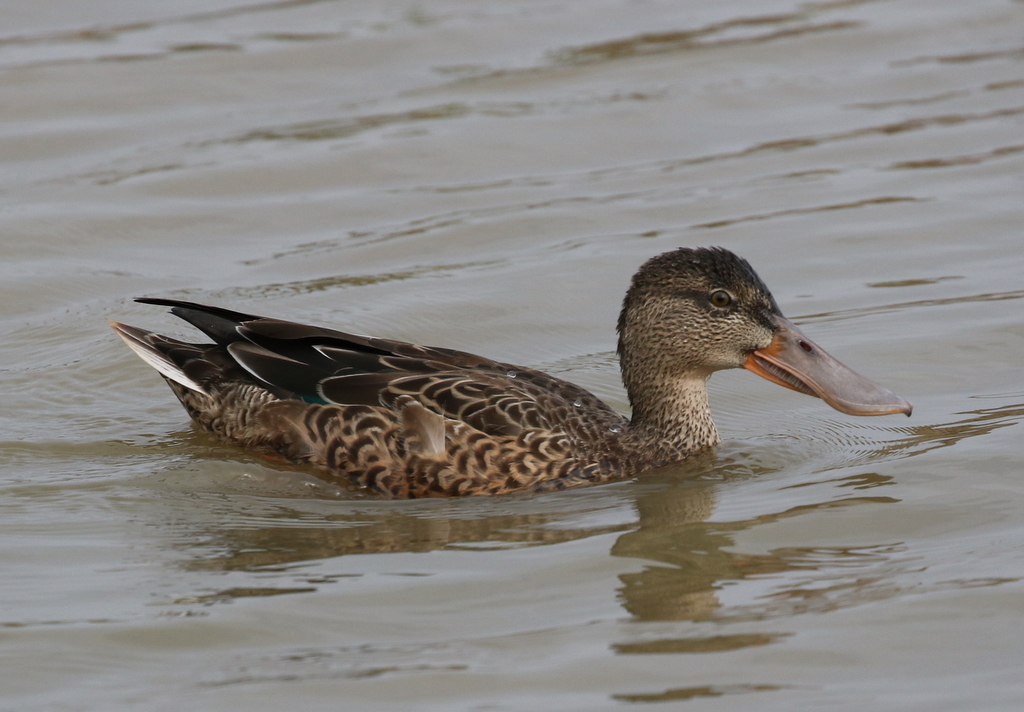
There were not many waders on this scrape at first sight, but scanning carefully we found a couple of Little Ringed Plover at the back of the main island. A Green Sandpiper was calling, and following the sound, we found it hiding in the cut reeds on the far corner of the same island. A Common Snipe crept into the cut reeds in front of it and melted away into the vegetation.
Our next stop was going to be in Dauke’s Hide, but we couldn’t resist a quick look over from here at Simmond’s Scrape next door. There seemed to be more waders on there, lots of Ruff and quite a few Dunlin in particular. We found a juvenile Spotted Redshank asleep with the ducks and an Avocet on the front of the closest island. We got the scope on it and could see its dusky grey overall colouration, spotted on the wings with silvery white dots, and even though it was asleep we could see its white brow back to the eye.
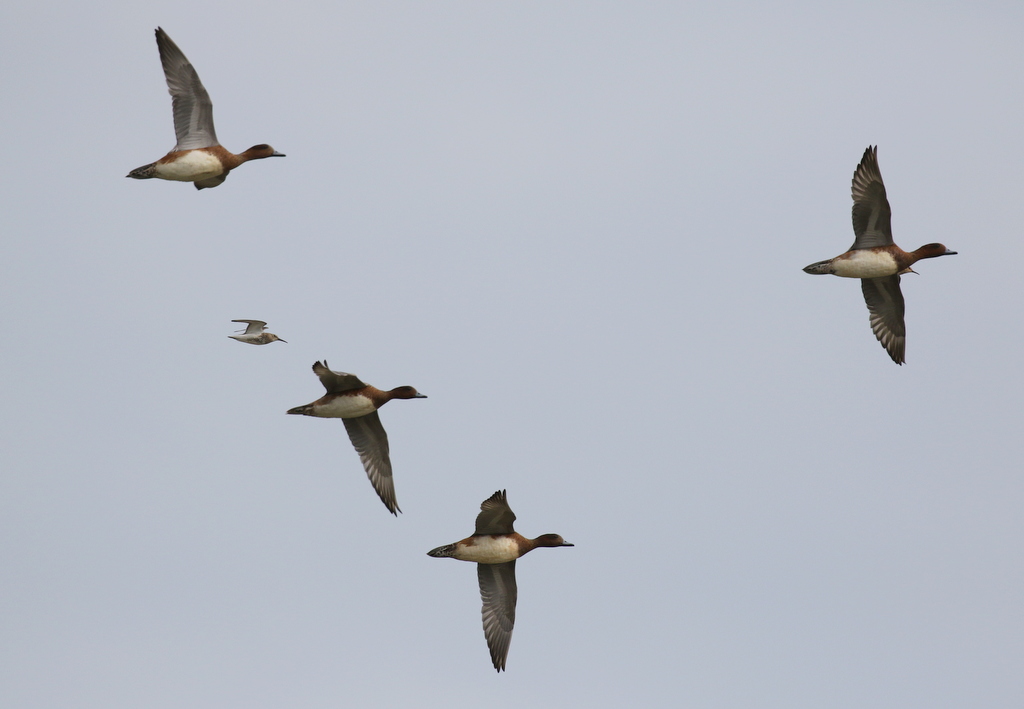
Then most of the birds on the scrape took off – all the Ruff and Dunlin and most of the ducks too. They whirled round over the reeds and scrapes – a small group of Wigeon flew round in front of us, with a couple of Dunlin for company. Most of the waders flew off, but the ducks returned. The Spotted Redshank woke up briefly, flashed its long, fine bill, and went back to sleep!
We found out what the culprit was – a Marsh Harrier had drifted over from the reedbed at the back, an adult male. It disappeared off over Cricket Marsh. A short while later, a juvenile Marsh Harrier did exactly the same thing, scattering everything again.
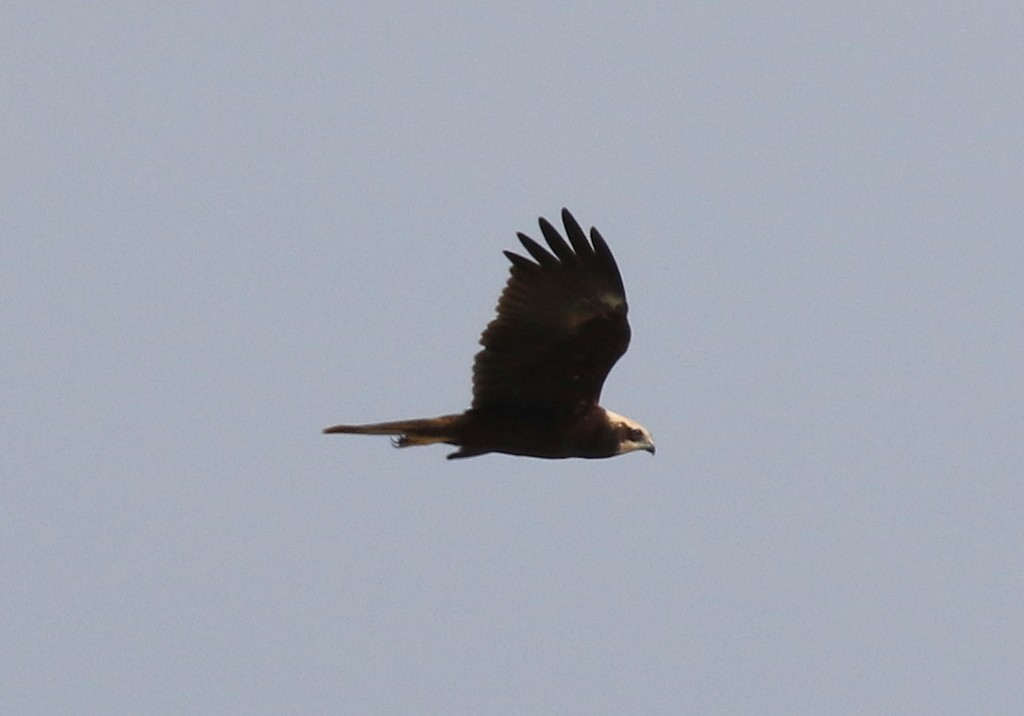
With most of the waders gone from Simmond’s Scrape now, we decided to head round to have a look at Pat’s Pool next instead. The water level on here has gone up in the last few days – presumably they have let some more water on. Consequently, there weren’t many waders on here either. There were just some Ruff, presumably some of them come over from Simmond’s, and a few Lapwings.
While we scanned round the scrape, we kept one eye on Simmond’s to see if the waders might return, but only a few Ruff and four of the Dunlin drifted back in. A single Pintail was notable amongst the commoner ducks. We had a quick look in at Dauke’s Hide anyway, adding a Black-tailed Godwit feeding in deeper water in the far corner to the day’s list. The Spotted Redshank was still asleep! We decided to head round to the East Bank next.
It was a bit breezy up on the bank. We could hear Bearded Tits calling from the reeds, but they were keeping well tucked down today. There were quite a few Meadow Pipits chasing each other round the grazing meadow the other side and we heard a Skylark too.
There were quite a few waders out on Pope’s Pool – mostly Ruff, probably including some which had flown here when they were flushed from Simmond’s Scrape. There was a Common Sandpiper too, and several Common Snipe, but there was a surprising amount of shimmer in the air which made it hard to make out any detail at that range. Thankfully, we found another Common Sandpiper feeding along the edge of the Serpentine, which was much easier to see.
We had a quick look in the main drain as we passed, but there was no sign of the Otter. Just a rather distant Little Grebe diving in the channel. So we carried straight on to the shelter overlooking Arnold’s Marsh.
There were lots of birds on Arnold’s – a large flock of waders and another of Sandwich Terns. Through the scope, we could see the waders were mainly Black-tailed Godwits and Redshank. In amongst them were several much smaller Dunlin and four Ringed Plovers. A small party of Curlews were roosting in the vegetation off to one side. This was where most of the waders were now hiding!
The Black-tailed Godwits were already starting to drift off back towards the reserve, in small groups, when everything erupted. We looked up to see two Hobbys shooting across the sky, one following after the other. Having sown pandemonium, they gained height and then one of them set off at speed after a Dunlin, chasing it off over Pope’s Pool, followed by the second. The Dunlin was too quick for them – they had lost the element of surprise – and the two Hobbys gave up, flying off over the reedbed towards the reserve.
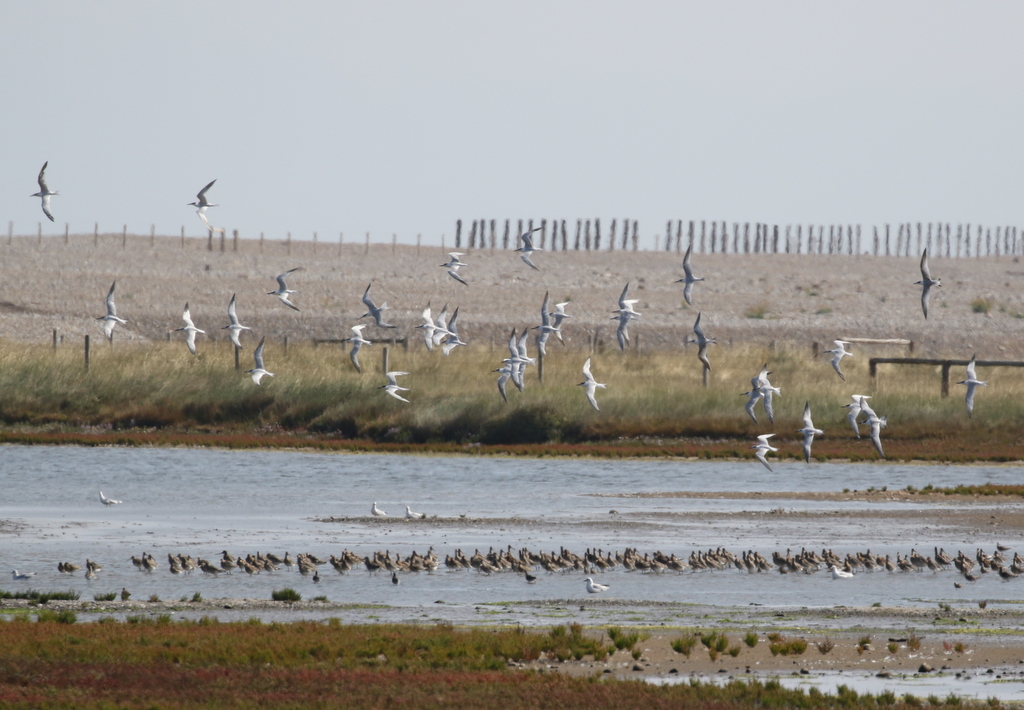
Most of the waders settled quickly back down again on Arnold’s, but some headed off back towards the reserve too. We stopped to scan through them again and about five minutes later, the Hobbys were back for another go, putting everything up again, but powering straight on through without stopping.
A distant flock of ducks caught our eye, coming in over the sea just beyond the shingle ridge. There were about forty of them, mostly Wigeon but with a few Teal mixed in, fresh arrivals from the Continent coming here for the winter, migration in action! With a moderate north wind, there had been some seabirds seen along the coast too this morning, so we thought we would have a quick look. We headed out to the beach.
As we got out to the shingle ridge, another group of six Wigeon flew past above us and four more Teal came in low over the sea. Several of the Sandwich Terns were now fishing just offshore and further out, we picked up some larger white birds flying past over the sea, Gannets. There was a steady trickle of Gannets past as we stood on the beach, and a single Fulmar. We also spotted a couple of distant groups of Common Scoter flying past, more returning migrants.
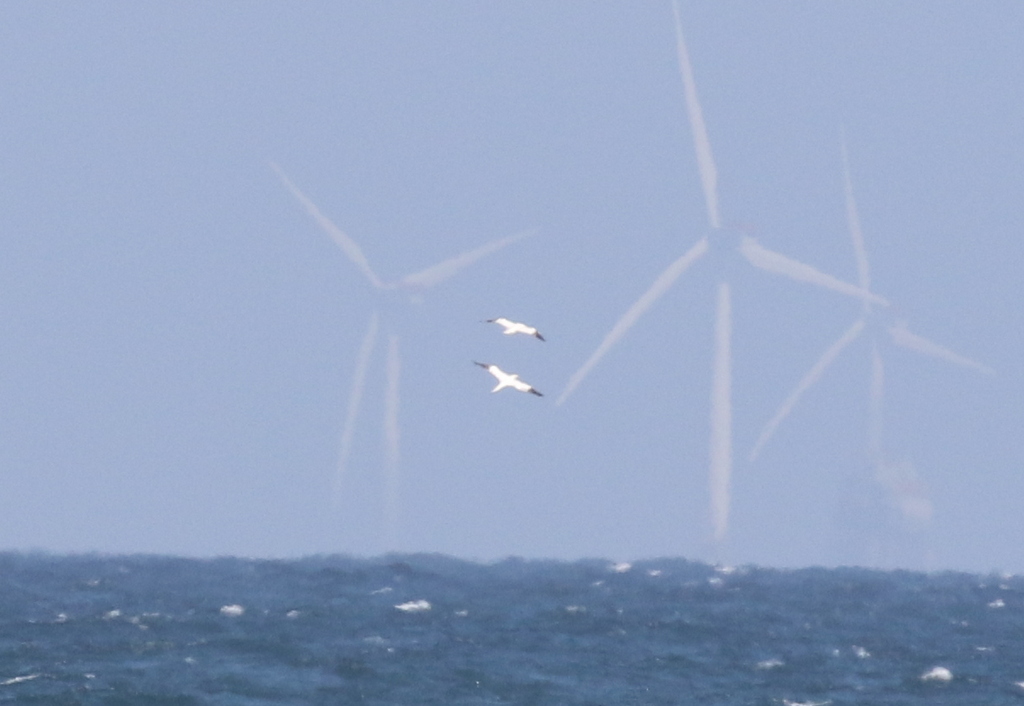
It was a bit chilly standing around in the wind out on the beach so, when someone told us the Otter had been showing earlier in the main drain, we headed back for a look. It had apparently been close to the sluice but had now swum further down the channel. We could see it in the distance, diving in the green blanket weed and we had a good look at it through the scope.
The Hobbys did yet another pass, coming in low over the grazing marsh and heading off over the reedbed, much closer this time. We didn’t know which way to look – Hobbys or Otter?!
The Otter caught an eel and climbed out onto the bank. Then it slipped back into the water and started swimming towards us. It kept diving and each time it resurfaced it was much closer. We stood quietly on the sluice and waited. It came closer and closer, before it was just a few metres from us. It came through the sparse reeds along the edge of the channel and then swam out right in front of us. We could even see the Otter still had the eel in its mouth, before it dived and the trail of bubbles disappeared through the sluice right below us! Amazing.

That was a great way to end the morning, and we headed round to the visitor centre for lunch, very pleased with what we had seen. After lunch, we drove back along to the Iron Road. We were a bit disappointed to see that they had just been topping the grazing meadows with a tractor, presumably causing lots of disturbance, although the tractor driver appeared to have gone off for his lunch now.
The Iron Road pool looked quite dry and deserted, so we made our way along the path towards Babcock Hide. Several Egyptian Geese had already moved back in to the recently cut grass.
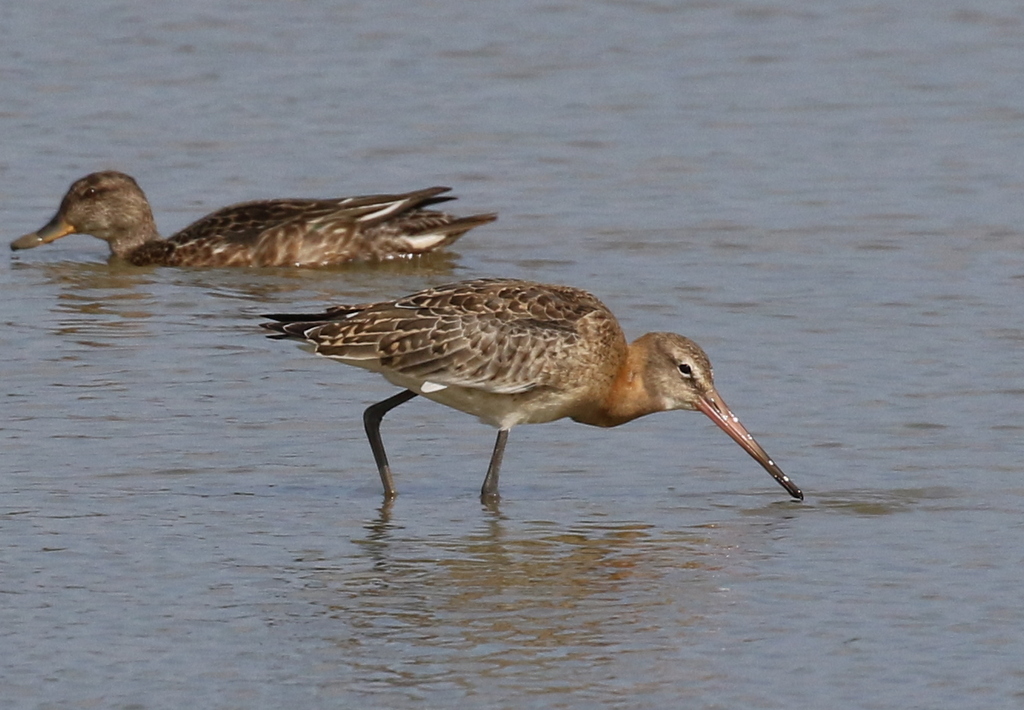
When we got to the hide and opened the flaps, we could see lots of waders in the water just in front. Most of them appeared to be Common Redshanks but there were a couple of juvenile Black-tailed Godwits too, which had come here from Iceland where they had been raised over the summer.
There were 26 Common Redshanks together in the flock but with them was one bird which looked subtly different. It was a touch darker grey, more brightly spotted on the wings, with bright white above the lores meeting over the bill and a slightly longer and finer bill. It was another juvenile Spotted Redshank.
It was really good to see the two species side by side, particularly watching their subtly different feeding actions, the Spotted Redshank sweeping its bill more quickly and vigorously from side to side through the shallow water.
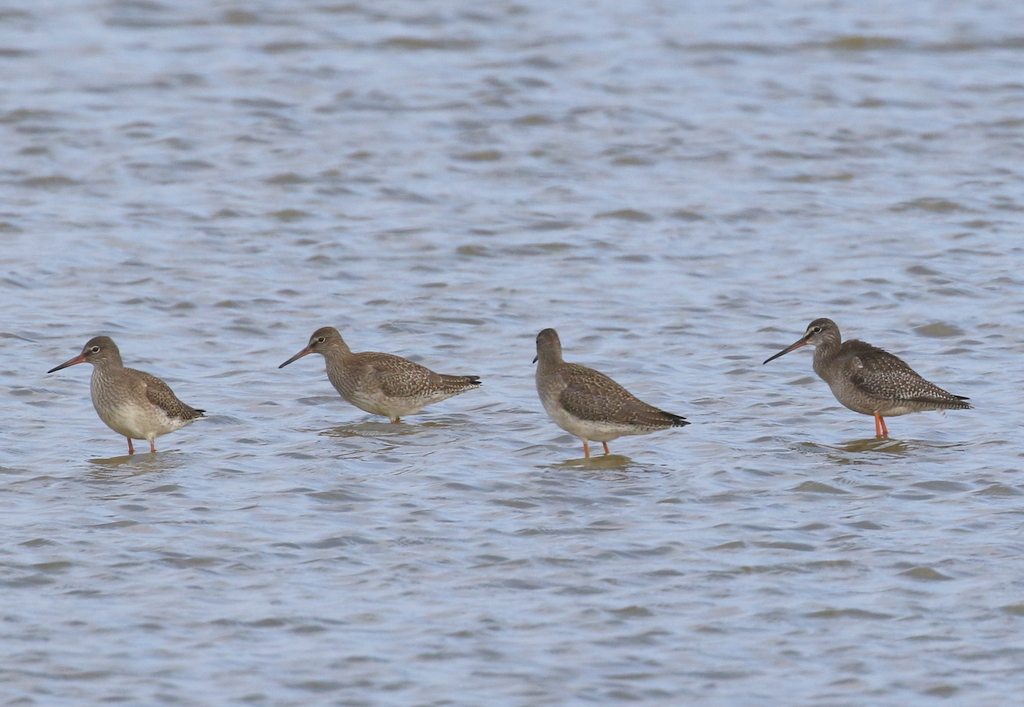
As we made our way back towards the road, along the track from the hide, we happened to glimpse something dropping down by the cattle gates at the top. It could have been anything and was almost certainly nothing interesting, but just the way it flew triggered some unconscious interest. We walked up to the gates but couldn’t see anything.
The tractor had been driven away earlier and the main gate out to the road left open, so rather than walk out through the pedestrian gate at the side, we walked out towards the main road. As we did so, a bird flew out of a very small bramble just before the bridge over the ditch. It was rather pale grey-brown, probably just one of the regular House Sparrows which are often along here, but as it flew away from us down the line of the ditch it looked oddly long-tailed. As it turned and dropped into the grassy bank beside the ditch, it looked like a Wryneck.
With the group standing on the path back towards the car and one of us walking back along the road, we were hoping the bird would fly back out to the fence or one of the bramble bushes further along the ditch. But before we could all get in place, the bird took off again. It flew up several metres into the sky, circled round and headed off over the road. This time we could see it definitely was a Wryneck! Unfortunately, it flew away strongly over the field the other side and was gone.
Wryneck is a scarce visitor here, a drift migrant which only arrives if the wind is coming off the continent when it is on its way from Scandinavia down to Africa, so this was a great bird to find. And all the more so here, a totally unexpected place to see one!
With the chance that migrants were starting to arrive, we returned to the car and carried on along the coast road to Kelling. It was rather quiet as we walked along the lane towards the Water Meadow. A Chiffchaff and a Blackcap both called from somewhere in the hedge, both probably local birds rather than migrants. There was no sign of anything of interest around the copse. A little flock of Linnets was in the brambles by the Water Meadow.

When we got to the cross track and could look back at the pool, we could see lots of gulls bathing and a small group loafing in the grass on the edge. There was a nice selection – mostly Black-headed Gulls, but also a few Herring Gulls, a Lesser Black-backed Gull and a juvenile Great Black-backed Gull. There were a few ducks too, largely Teal and Shoveler, but also another lone Pintail – they are starting to return now and this is an unusual place to see one, so the two we saw today may have been fresh returnees.
We carried on along the track towards the beach, scanning the bushes and brambles to see if we could find any grounded migrants, but there was no sign of any here. A Brown Hare ran down the hillside towards us, but stopped and started to feed in the long grass. Another Brown Hare had found a sheltered spot, out of the wind, in the lee of the bushes behind the beach.

As we walked along the track up the hillside just behind the beach, we scanned the sea to see if anything was passing offshore. Several Sandwich Terns flew past, presumably returning from fishing further along the coast. A fairly close-in Fulmar was also notable, but we couldn’t see anything more interesting.
There were no birds around the gun emplacements but we did eventually managed to locate a rather distant Stonechat, looking out across Weybourne Camp to the radar towers. There was still no sign of any migrants here, so we started to make our way back.
As we got back to the village, we could see four Common Buzzards over the hillside beyond, where the land rises up onto the Holt-Cromer ridge. With a north wind blowing, there was presumably quite an updraft for them today and they were hanging almost completely still, seemingly effortlessly. They were playing too, two of the swooping at each other, talon grappling. We stood for a couple of minutes watching them.
It was a lovely way to end a couple of very enjoyable days spent looking for migrants and more along the coast here.
















